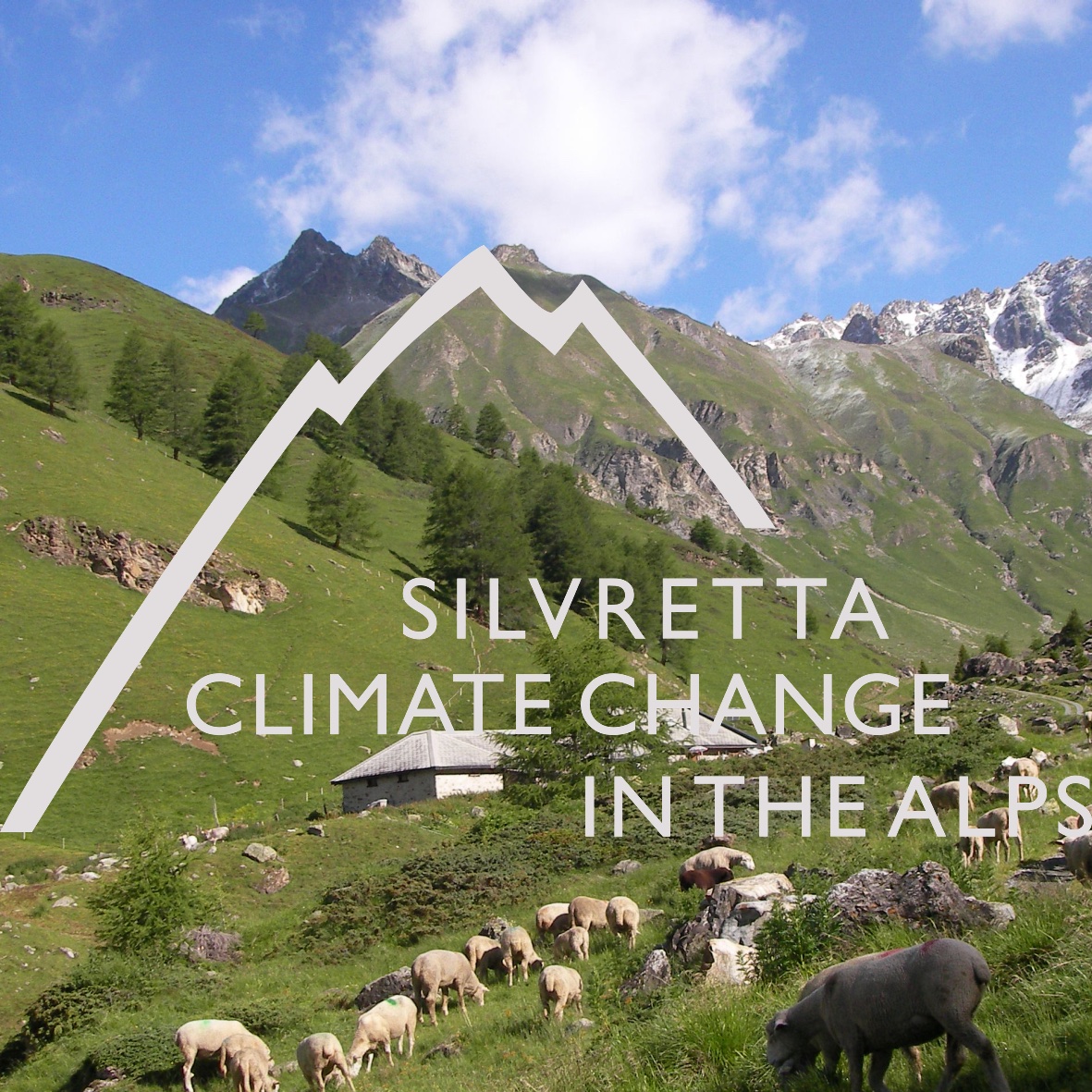Project’s storyline
The Climate Change in the Alps project started in 2010. It lied on the extensive archaeological surveys initiated by Thomas Reitmaier (University of Zürich) in the Central Alps, and specially in the Silvretta Massif. There, hundreds of archaeological sites, ranging from the Mesolithic Period to the Medieval Period, were identified.
The project aimed at bringing together archaeological and palaeo-ecological data. The expectations were that the latter would provide more insights about the past human activities and climatic impact on the massif’s vegetation. It consisted in an international and interdisciplinary collaboration: archaeology, landscape archaeology, etymology, palynology, carpology, dendrochronology, pedology; from Switzerland, Germany, and Austria.
I dealt with the palaeo-ecological analyses. They formed my PhD research, and dissertation, which I successfully defended in September 2015. 😎 I found that, at high altitudes in the Silvretta Massif, pastoral activities mostly began somewhere around the transition from the Neolithic Period to the Bronze Age. In other words, the neolithisation – the shift from an economy based on hunting and gathering, to an economy based on farming – happened at the really end of the Neolithic in this part of the Central Alps.
Outcome of the project
Peer-reviewed publications
Click on the preview to open the article page on the journal’s website.
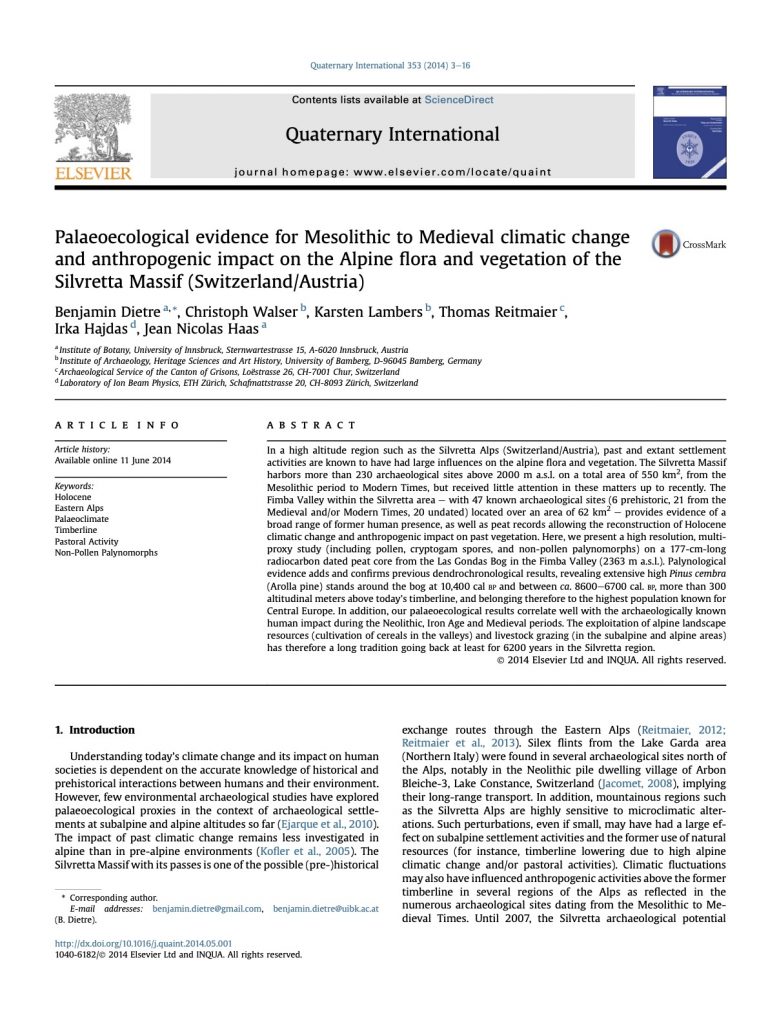
The first paper published from the project in 2014 in Quaternary International revealed the vegetation composition evolution for almost the entire Holocene from the Las Gondas Bog, on the northern side of the Silvretta Massif, under climatic and anthropogenic constraints.
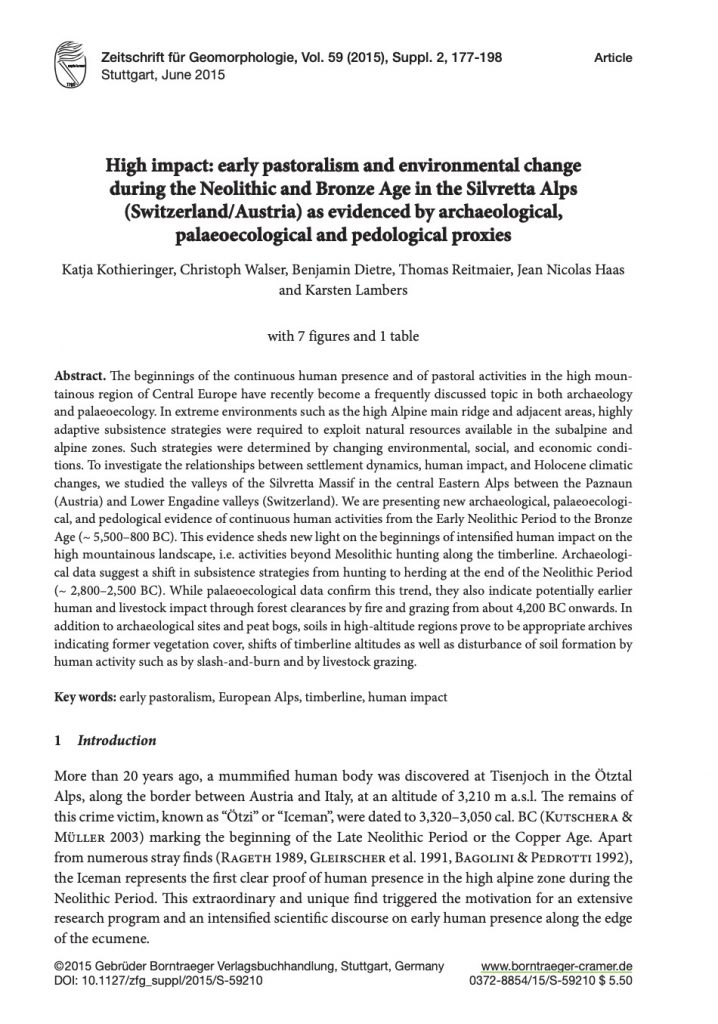
The second paper, published in 2015 in Zeitschrift für Geomorphologie, was a big deal at comparing all our data: palaeo-ecological, pedological, and archaeological data.
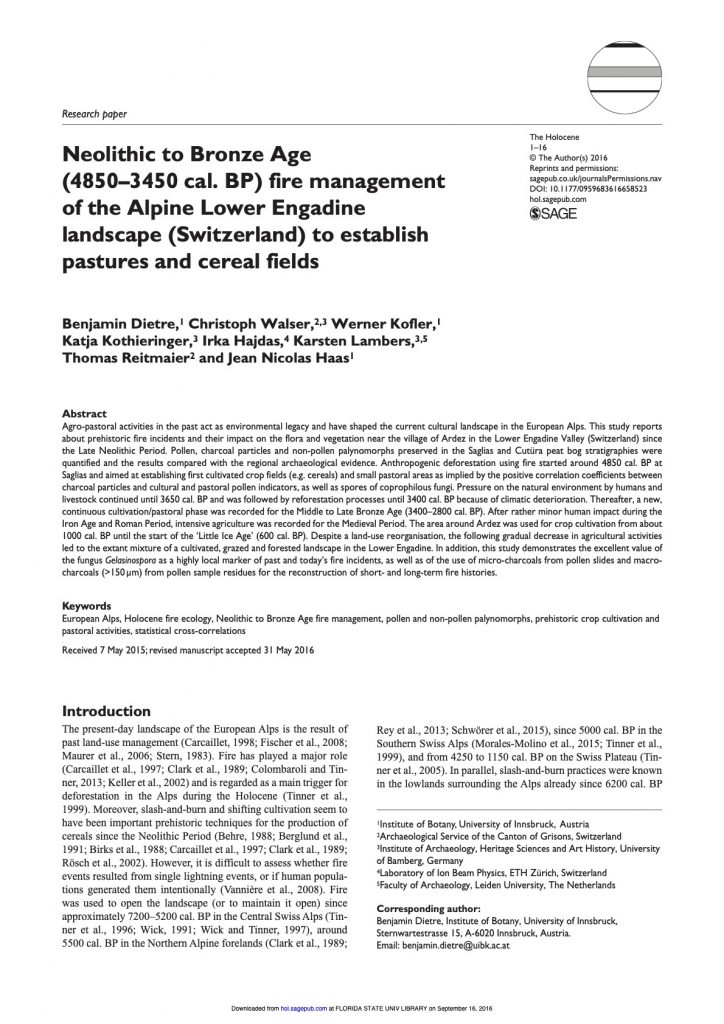
The third paper was published in 2017 in The Holocene. It deals with changes in vegetation composition, but also emphasizes the use of fire and agro-pastoral activities on the less elevated slopes of the southern side of the Silvretta Massif, using cross-correlation analysis.
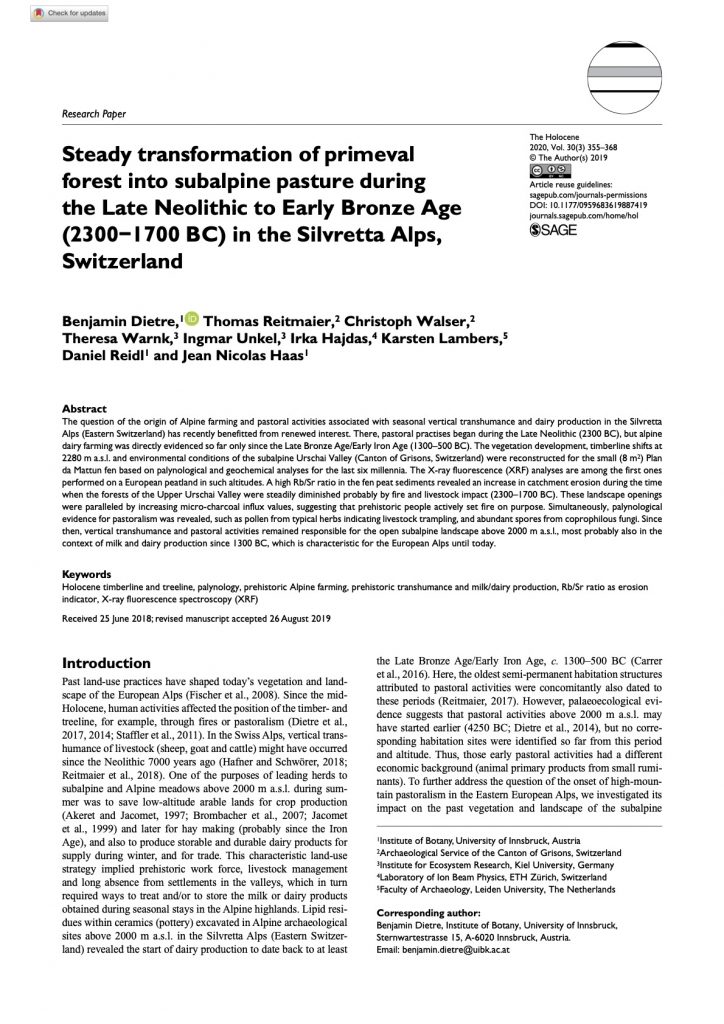
The last paper, published in 2020 in The Holocene (again), deals with pastoral activities at high altitude in the Massif. The palaeo-ecological data from the small Plan da Mattun Bog – a few meters from an abri used since the Mesolithic Period – notably record an important signal from coprophilous fungi spores.
Other publications
- Dietre, B., Anich, I., Reidl, D., Kappelmeyer, T. and Haas, J. N. (2012). “Erste Hirten und Bauern der Silvretta – Palynologie und Ethnobotanik im Fimbertal und Paznaun”. In: Letzte Jäger, erste Hirten. Hochalpine Archäologie in der Silvretta. Ed. by T. Reitmaier. Archäologie in Graubünden – Sonderheft 1, 237–256.
- Reitmaier, T., Lambers, K., Walser, C., Zingman, I., Haas, J. N., Dietre, B., Reidl, D., Hajdas, I., Nicolussi, K., Kathrein, Y., Naef, L. and Kaiser, T. (2013). Alpine Archäologie in der Silvretta. Archäologie Schweiz 36(1), 4–15.
Read also
- Carrer, F., Colonese, A. C., Lucquin, A., Petersen Guedes, E., Thompson, A., Walsh, K., Reitmaier, T., & Craig, O. E. (2016). Chemical Analysis of Pottery Demonstrates Prehistoric Origin for High-Altitude Alpine Dairying. PLOS ONE, 11(4), e0151442. https://doi.org/10.1371/journal.pone.0151442
Thanks to Jean Nicolas Haas for the featured image at the top of the article.
